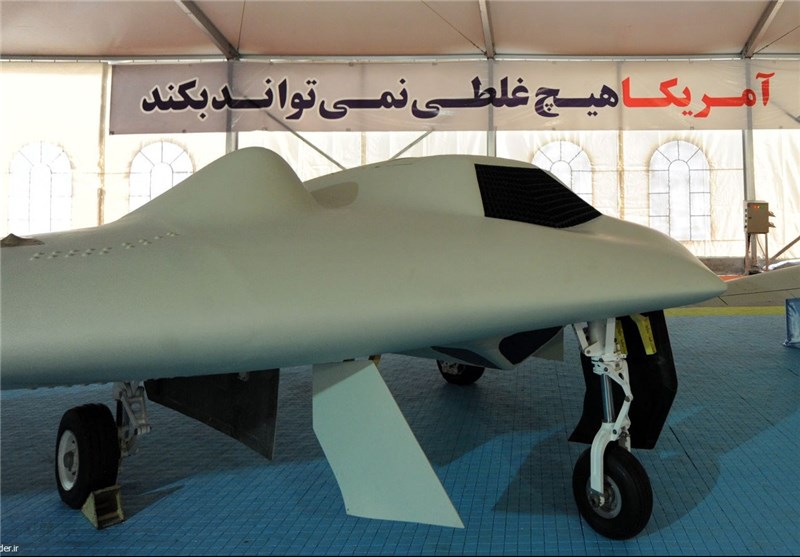Although footage has yet to be released, Tehran claims a domestically modified RQ-170 Sentinel has already made its maiden flight.
Update Nov. 12, 2014: a video has been released. Click here.
On May 11, Iran unveiled a copy of the Lockheed Martin RQ-170 Sentinel UAV (Unmanned Aerial Vehicle) drone allegedly manufactured by reverse-engineering of U.S. Sentinel drone captured in December 2011. The Iranian version of the Sentinel drone was displayed next to the one that crash landed in northeastern Iran about three years ago for reasons that are still unknown.
In February 2013, a video proved that they had accessed some of the data stored inside the so-called “Beast of Kandahar”: after several unsubstantiated claims, the footage was the first evidence that Iran had managed to retrieve something from the once secret drone’s internal hard disks.
“All the memories and computer systems of this plane have been decoded and some good news will be announced in the near future not just about the RQ-170 and the optimizations that our forces have done on the reversed engineered model of this drone, but also in area of other important defense achievements,” IRGC Lieutenant Commander General Hossein Salami said to the Fars News Agency last year.
On Nov. 10, Commander of the Islamic Revolution Guards Corps (IRGC) Aerospace Force, Brigadier General Amir Ali Hajizadeh, told the press that the Iranian version of the RQ-170 drone, modified to carry out both bombing and reconnaissance missions, has already had its maiden flight.
“The footage of its flight will be released soon,” Hajizadeh told reporters according to FARS News.
Whereas the first prototype was a smaller copy of the Sentinel (60% the size of the original RQ-170) which flew about four months ago, the final model is a full-scale, reverse-engineered stealthy drone, equipped with special parts required to carry bombs. Weapons to be used “against the US warships in any possible showdown between the two countries.”
According to the Iranians the American drone was brought down by the Iranian Armed Forces’ electronic warfare unit which hacked into the RQ-170 remote control systems and ordered the aircraft to land in the eastern part of the country.
Even though such claims are still debated, especially in the light of other alleged achievements by Tehran (as the infamous F-313 Qaher stealth fighter jet), Iran has really showcased some almost intact UAV types in the recent past: two RQ-11s and at least one ScanEagle that had penetrated the Iranian airspace from the Persian Gulf.
Anyway, while there are chances that the engine, circuitry, lenses, memories and sensors that survived the crash landing of the CIA-operated RQ-170 might have been evaluated, tested, copied and, possibly, improved with the help of Russia and China, it’s hard to believe such hardware and remaining data have allowed Iran to move as much as 35 years ahead in building drones or their components. Especially if we consider that, unlike the X-47B and some black UAV projects like the RQ-180, the RQ-170 is no longer the American cutting edge robot tech.
Image credit: Tasmin News
















